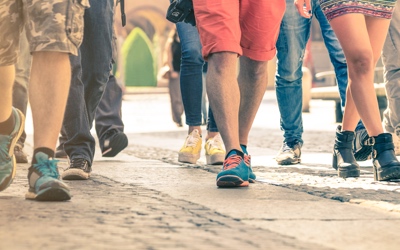
Historical Rio Walking Tour
4 h
Till fots
Bekräftelse direkt
Om den här aktiviteten
Itinerary
This is a typical itinerary for this product
Stop At: Copacabana Beach, Av. Atlantica - Copacabana, Rio de Janeiro, State of Rio de Janeiro 22070-011 Brazil
You will meet our tour guide at the entrance of the Belmond Copacabana Palace Hotel and you will be taken by subway to downtown, stopping at Cinelândia Station
Duration: 15 minutes
Pass By: Cinelandia, Avenue rio Branco, Rio de Janeiro, State of Rio de Janeiro 20031-050 Brazil
The metro station from the 1900's is a relic of the French Architectural influence in Brazil.
Pass By: Museu Nacional De Belas Artes, Avenida Rio Branco 199 Centro, Rio de Janeiro, State of Rio de Janeiro 20040-008 Brazil
A French Renaissance-style building with a collection of paintings by Brazil's finest contemporary artists as well as an impressive array of folk and African art.
Pass By: Theatro Municipal do Rio de Janeiro, Praca Floriano, Rio de Janeiro, State of Rio de Janeiro 20031-050 Brazil
The Municipal Theather, and the city Opera's House, from 1909, is filled with gilded mirrors, statues, murals, stained-glass windows and sparkling chandeliers.
Pass By: National Library (Biblioteca Nacional), Avenida Rio Branco 219, Rio de Janeiro, State of Rio de Janeiro 20040-920 Brazil
The National Library is the depository of the bibliographical and documentary heritage of Brazil, considered by UNESCO as the seventh largest national library in the world, and is also the largest library in Latin America
Read more about Best of Rio Walking Tour - City Center, Olympic Boulevard and Museum of Tomorrow 2018 - Rio de Janeiro - https://www.viator.com/tours/Rio-de-Janeiro/Best-of-Rio-Walking-Tour-City-Center-Olympic-Boulevard-and-Museum-of-Tomorrow/d712-21513P22?mcid=56757
Pass By: Palacio Pedro Ernesto - Camara Municipal do Rio de Janeiro, Praca Floriano, Rio de Janeiro, State of Rio de Janeiro 20031-050 Brazil
The Pedro Ernesto Palace, the building that now houses the City Council of the municipality, is part of one of the most valuable architectural ensembles of the city. In the main facade facing the square, perfectly symmetrical and rich in details, the access staircase, the upper gallery with its double columns and the two "tempiettos" that adorn the corners of the building deserve special attention.
Pass By: Centro Cultural Justica Federal, Avenida Rio Branco 241, Rio de Janeiro, State of Rio de Janeiro 20040-009 Brazil
The Cultural Center of the Federal Justice is a known space for incentivizing and ensuring access of the population to many ways of cultural expression, hosting expositions, dance and music shows, courses, seminars, lectures and others.
Pass By: Tiradentes Palace, Rua Primeiro de Marco s/n Centro, Rio de Janeiro, State of Rio de Janeiro 20010-900 Brazil
This marvelous palace in the center of the city draws attention to those who pass by and get delighted with its Corinthian columns and its eclectic style. The Tiradentes Palace was the former building of the Brazilian National Congress, between 1926 and 1960, and is the current seat of the State Legislative Assembly.
Pass By: Praca Quinze de Novembro - Centro, Rio de Janeiro, State of Rio de Janeiro 20010-010 Brazil
The square is located between Estação das Barcas, from where boats leave for Niterói, Rua 1º de Março, Arco do Teles and Paço Imperial, colonial building built in the 18th century to be the residence of the governors of the Captaincy of Rio de Janeiro and which later also became inhabited by the King of Portugal Dom João VI and by emperors of Brazil. Today, the Paço is a cultural center.
One of the symbols of the square is the fountain of Mestre Valentim, inaugurated in 1789, which is deactivated. In the square, also is located the Church of Our Lady of Monte do Carmo. In 1888, the square was the scene of celebrations by the Golden Law, signed by Princess Isabel, who extinguished slavery in the country.
Pass By: Paco Imperial, Praca 15 de Novembro 48, Rio de Janeiro, State of Rio de Janeiro 20010-010 Brazil
Built in 1743, it was used as the House of the Viceroys of Brazil. With the entrance of the Court of D. João VI to Rio de Janeiro, the Palace became the seat of the governments of the Kingdom and the Empire. After the Proclamation of the Republic, the Post and Telegraph were located. In 1938, it was listed by National Historical and Artistic Heritage and today is one of the milestones of the city's cultural history. Since 1985, Paço Imperial has been a cultural center linked to the National Historical and Artistic Heritage Institute of the Ministry of Culture, and it has a free entrance all year round.
Pass By: Correios Cultural Centre, Rua Visconde de Itaborai 20 Centro, Rio de Janeiro, State of Rio de Janeiro 20010-976 Brazil
The architectural lines of the façade is ecletic style, feature the beginning of the century, built to headquarter a Brazilian Lloyd school. But it didn’t happen and the building was used, for more than 50 years, to make the administrative and operational post areas could work. In 80s, the immobile was disabled to reform it, being reopened in July 2nd, in 1992, partly renovated, to receive the “Exposição Ecológica 92”, integral event of the United Nations Conference on Environment Calendar. – RIO 92
The official inauguration of Centro Cultural Correios happened in August of the next year with the World official exposition Filatelia – Brasiliana, 93. Since then, the Centro Cultural Correios is marking the presence of the Institute in the city promoting events in many areas on many vacancies, like theater, video, music, arts with promotions and events in many areas focusing on the integration of carioca’s people with a varied ways of artistic expression.
Pass By: Travessa do Comercio Centro Rio de Janeiro, Rio de Janeiro, State of Rio de Janeiro 20010-080 Brazil
One of the most interesting tours that can be done in the Center of Rio is to cross the alleys and alleys that form the Travessa do Comércio, near Praça XV. Travessa, closed to car traffic, is one of the few places in the city that, in a way, preserves the traits of colonial times.
Pass By: Casa Franca-Brasil, Rua Visconde de Itaborai 78, Rio de Janeiro, State of Rio de Janeiro 20010-060 Brazil
Commissioned in 1819 by King João VI to Grandjean de Montigny, architect of the French Artistic Mission, the work itself is an important historical document. This is the first record of the neoclassical style in Rio de Janeiro, a tendency that would then become popular, giving the city marked by its colonial houses a more cosmopolitan tone, European fashion.
Pass By: Centro Cultural Banco do Brasil - CCBB Rio de Janeiro, Rua Primeiro de Marco 66, Rio de Janeiro, State of Rio de Janeiro 20010-000 Brazil
The CCBB is a cultural center that consists of exhibition rooms, three theaters, a library, cinema, and a video room. It is housed in an art deco style building located in what used to be the financial district of Rio de Janeiro.
Pass By: Church of Our Lady of the Candelaria, Praca Pio X, Rio de Janeiro, State of Rio de Janeiro 20040-020 Brazil
The Church of Our Lady of Candelaria is a Catholic temple located in the Center of the city of Rio de Janeiro, Brazil. It is one of the main religious monuments of the city, the traditional stage of weddings of the Carioca society.
Läs mer
Visa mindre
This is a typical itinerary for this product
Stop At: Copacabana Beach, Av. Atlantica - Copacabana, Rio de Janeiro, State of Rio de Janeiro 22070-011 Brazil
You will meet our tour guide at the entrance of the Belmond Copacabana Palace Hotel and you will be taken by subway to downtown, stopping at Cinelândia Station
Duration: 15 minutes
Pass By: Cinelandia, Avenue rio Branco, Rio de Janeiro, State of Rio de Janeiro 20031-050 Brazil
The metro station from the 1900's is a relic of the French Architectural influence in Brazil.
Pass By: Museu Nacional De Belas Artes, Avenida Rio Branco 199 Centro, Rio de Janeiro, State of Rio de Janeiro 20040-008 Brazil
A French Renaissance-style building with a collection of paintings by Brazil's finest contemporary artists as well as an impressive array of folk and African art.
Pass By: Theatro Municipal do Rio de Janeiro, Praca Floriano, Rio de Janeiro, State of Rio de Janeiro 20031-050 Brazil
The Municipal Theather, and the city Opera's House, from 1909, is filled with gilded mirrors, statues, murals, stained-glass windows and sparkling chandeliers.
Pass By: National Library (Biblioteca Nacional), Avenida Rio Branco 219, Rio de Janeiro, State of Rio de Janeiro 20040-920 Brazil
The National Library is the depository of the bibliographical and documentary heritage of Brazil, considered by UNESCO as the seventh largest national library in the world, and is also the largest library in Latin America
Read more about Best of Rio Walking Tour - City Center, Olympic Boulevard and Museum of Tomorrow 2018 - Rio de Janeiro - https://www.viator.com/tours/Rio-de-Janeiro/Best-of-Rio-Walking-Tour-City-Center-Olympic-Boulevard-and-Museum-of-Tomorrow/d712-21513P22?mcid=56757
Pass By: Palacio Pedro Ernesto - Camara Municipal do Rio de Janeiro, Praca Floriano, Rio de Janeiro, State of Rio de Janeiro 20031-050 Brazil
The Pedro Ernesto Palace, the building that now houses the City Council of the municipality, is part of one of the most valuable architectural ensembles of the city. In the main facade facing the square, perfectly symmetrical and rich in details, the access staircase, the upper gallery with its double columns and the two "tempiettos" that adorn the corners of the building deserve special attention.
Pass By: Centro Cultural Justica Federal, Avenida Rio Branco 241, Rio de Janeiro, State of Rio de Janeiro 20040-009 Brazil
The Cultural Center of the Federal Justice is a known space for incentivizing and ensuring access of the population to many ways of cultural expression, hosting expositions, dance and music shows, courses, seminars, lectures and others.
Pass By: Tiradentes Palace, Rua Primeiro de Marco s/n Centro, Rio de Janeiro, State of Rio de Janeiro 20010-900 Brazil
This marvelous palace in the center of the city draws attention to those who pass by and get delighted with its Corinthian columns and its eclectic style. The Tiradentes Palace was the former building of the Brazilian National Congress, between 1926 and 1960, and is the current seat of the State Legislative Assembly.
Pass By: Praca Quinze de Novembro - Centro, Rio de Janeiro, State of Rio de Janeiro 20010-010 Brazil
The square is located between Estação das Barcas, from where boats leave for Niterói, Rua 1º de Março, Arco do Teles and Paço Imperial, colonial building built in the 18th century to be the residence of the governors of the Captaincy of Rio de Janeiro and which later also became inhabited by the King of Portugal Dom João VI and by emperors of Brazil. Today, the Paço is a cultural center.
One of the symbols of the square is the fountain of Mestre Valentim, inaugurated in 1789, which is deactivated. In the square, also is located the Church of Our Lady of Monte do Carmo. In 1888, the square was the scene of celebrations by the Golden Law, signed by Princess Isabel, who extinguished slavery in the country.
Pass By: Paco Imperial, Praca 15 de Novembro 48, Rio de Janeiro, State of Rio de Janeiro 20010-010 Brazil
Built in 1743, it was used as the House of the Viceroys of Brazil. With the entrance of the Court of D. João VI to Rio de Janeiro, the Palace became the seat of the governments of the Kingdom and the Empire. After the Proclamation of the Republic, the Post and Telegraph were located. In 1938, it was listed by National Historical and Artistic Heritage and today is one of the milestones of the city's cultural history. Since 1985, Paço Imperial has been a cultural center linked to the National Historical and Artistic Heritage Institute of the Ministry of Culture, and it has a free entrance all year round.
Pass By: Correios Cultural Centre, Rua Visconde de Itaborai 20 Centro, Rio de Janeiro, State of Rio de Janeiro 20010-976 Brazil
The architectural lines of the façade is ecletic style, feature the beginning of the century, built to headquarter a Brazilian Lloyd school. But it didn’t happen and the building was used, for more than 50 years, to make the administrative and operational post areas could work. In 80s, the immobile was disabled to reform it, being reopened in July 2nd, in 1992, partly renovated, to receive the “Exposição Ecológica 92”, integral event of the United Nations Conference on Environment Calendar. – RIO 92
The official inauguration of Centro Cultural Correios happened in August of the next year with the World official exposition Filatelia – Brasiliana, 93. Since then, the Centro Cultural Correios is marking the presence of the Institute in the city promoting events in many areas on many vacancies, like theater, video, music, arts with promotions and events in many areas focusing on the integration of carioca’s people with a varied ways of artistic expression.
Pass By: Travessa do Comercio Centro Rio de Janeiro, Rio de Janeiro, State of Rio de Janeiro 20010-080 Brazil
One of the most interesting tours that can be done in the Center of Rio is to cross the alleys and alleys that form the Travessa do Comércio, near Praça XV. Travessa, closed to car traffic, is one of the few places in the city that, in a way, preserves the traits of colonial times.
Pass By: Casa Franca-Brasil, Rua Visconde de Itaborai 78, Rio de Janeiro, State of Rio de Janeiro 20010-060 Brazil
Commissioned in 1819 by King João VI to Grandjean de Montigny, architect of the French Artistic Mission, the work itself is an important historical document. This is the first record of the neoclassical style in Rio de Janeiro, a tendency that would then become popular, giving the city marked by its colonial houses a more cosmopolitan tone, European fashion.
Pass By: Centro Cultural Banco do Brasil - CCBB Rio de Janeiro, Rua Primeiro de Marco 66, Rio de Janeiro, State of Rio de Janeiro 20010-000 Brazil
The CCBB is a cultural center that consists of exhibition rooms, three theaters, a library, cinema, and a video room. It is housed in an art deco style building located in what used to be the financial district of Rio de Janeiro.
Pass By: Church of Our Lady of the Candelaria, Praca Pio X, Rio de Janeiro, State of Rio de Janeiro 20040-020 Brazil
The Church of Our Lady of Candelaria is a Catholic temple located in the Center of the city of Rio de Janeiro, Brazil. It is one of the main religious monuments of the city, the traditional stage of weddings of the Carioca society.
Ingår
- Professional guide
Ingår ej
- Food and drinks
- Gratuities
- Hotel pickup and drop-off
Extra
- Confirmation will be received at time of booking
- Travelers should have a moderate physical fitness level
- Operated by a multilingual guide
- Not recommended for people with walking difficulties
- It is recommended to wear comfortable shoes
- Subject to favorable weather conditions. If canceled due to poor weather, you will be given the option of an alternative date.
Funktioner
Turism
85%
Kulturellt
75%
Sport
25%
Du kanske också gillar









 Visa alla 30 Samlingar
Visa alla 30 Samlingar
Klicka för att upptäcka andra upplevelser
Visa alla
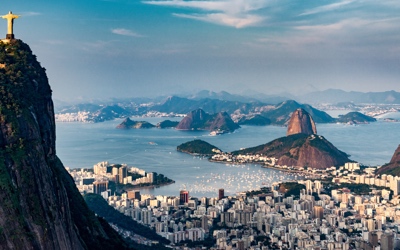
Samlingar
City Tour
103 Aktiviteter
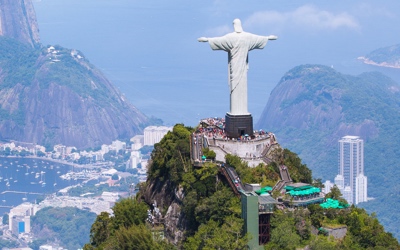
Samlingar
Christ Statue Corcovado
89 Aktiviteter
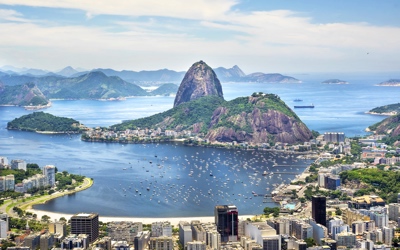
Samlingar
Sugarloaf Mountain
79 Aktiviteter
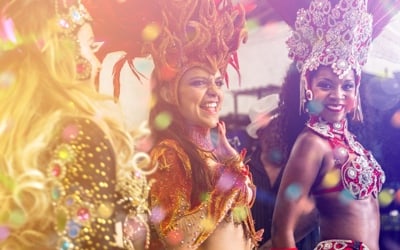
Samlingar
Carnival
32 Aktiviteter
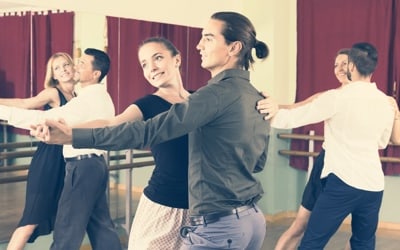
Samlingar
Dance Class
12 Aktiviteter

Samlingar
Garden & Forest
63 Aktiviteter

Samlingar
Jeep Tour
10 Aktiviteter
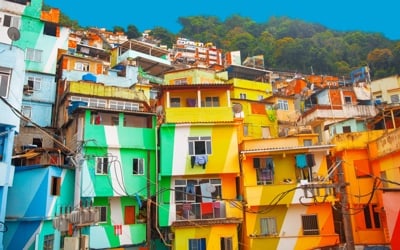
Samlingar
Favela Tour
23 Aktiviteter

Samlingar
Santa Teresa
20 Aktiviteter

Samlingar
Boat & Cruise
37 Aktiviteter






